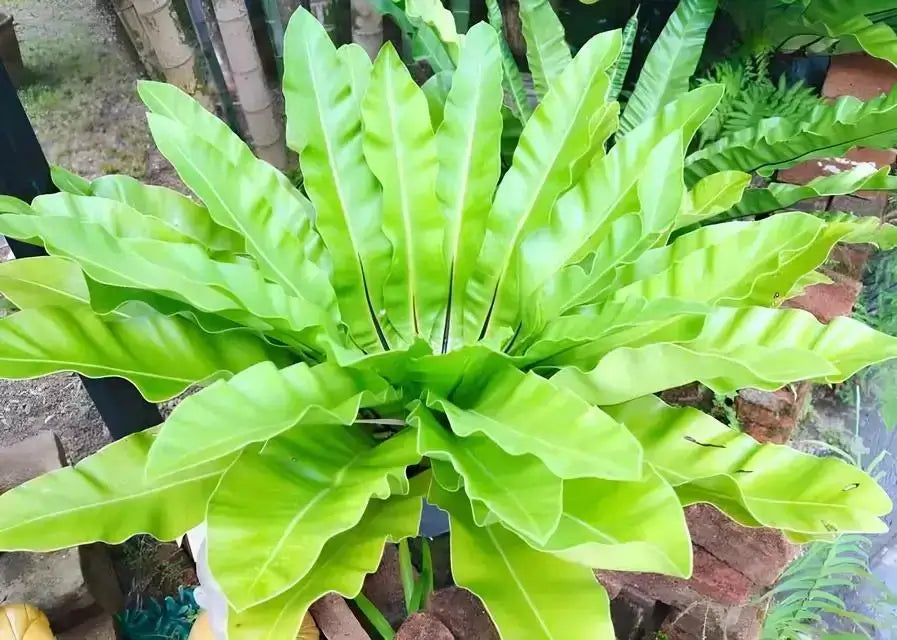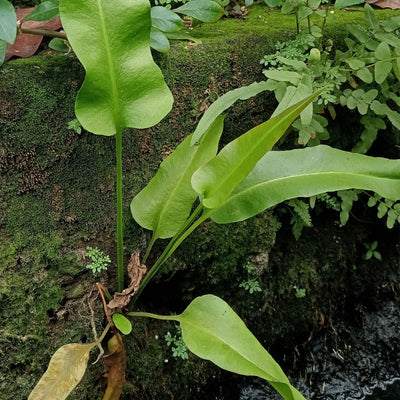Walking ferns (Asplenium rhizophyllum) are a captivating and somewhat unusual fern species that draws the attention of gardeners and enthusiasts alike. Known for its unique propagation method, the walking fern has a mysterious and graceful presence in the woodland landscape. While not as commonly seen in gardens as other ferns, its rarity, and unique growing habits make it a desirable addition for those seeking something a little out of the ordinary.
Is walking fern rare?
Walking ferns are common, but they have a more specific habitat preference than other fern species. Their natural range extends across parts of eastern North America, but they thrive best in very particular conditions, often favoring limestone-rich soils and rocky outcroppings in shaded environments. While they aren't endangered, their presence can sometimes feel elusive, mainly because they grow in microhabitats that aren't commonly encountered unless one ventures into specific types of forest or rocky landscapes.
In gardens, walking ferns are less commonly planted than more familiar ferns like the ostrich or maidenhair fern. However, this adds to their allure, making them an intriguing choice for fern collectors and garden enthusiasts looking to incorporate a unique and less common species into their landscape. Because they require specific conditions to thrive, they might be perceived as rare by gardeners who haven't encountered the fern in a suitable habitat or setting.
Where do walking ferns grow?
Walking ferns prefer to grow in areas where they can nestle into crevices of rocks, particularly those composed of limestone or other calcareous material. These ferns are often found in shady, wooded areas with filtered light and high humidity. Their natural environment protects them from the harshness of direct sunlight, while the cool, moist air helps keep their leaves lush and vibrant.
In a garden setting, recreating this environment can be a challenge but is certainly achievable with careful planning. Walking ferns need a shaded area with well-drained soil that mimics the rocky limestone environments. While they enjoy moisture, the soil should not be overly waterlogged. A rock garden or a shady nook with moss-covered stones can be a perfect backdrop for these ferns, giving them the needed structure and moisture retention. It's essential to remember that these ferns thrive best in an environment that mimics their native woodland habitats-cool, moist, and shaded.
Which fern is called a walking fern?
The fern commonly referred to as the walking fern is Asplenium rhizophyllum, a member of the spleenwort family. This intriguing fern gets its name from its distinctive way of spreading and propagating. Unlike many ferns that reproduce primarily through spores, the walking fern also propagates vegetatively. Its long, narrow leaves curve downward, and when the tips touch the ground, they take root, forming new fern plants. This method of spreading gives the impression that the fern is "walking" across the ground, moving from one location to another over time.
This unique reproductive strategy is one of the features that set the walking fern apart from other types of ferns. Rather than spores alone, its leaves help it spread across a landscape. This creeping, slow movement of growth is captivating to observe, and the fern's ability to create small colonies of offspring gives it a natural, organic feel, making it an excellent addition to gardens that aim to evoke a wild, untamed aesthetic.
What is the generic name of the walking fern?
The walking fern's generic name, Asplenium, is derived from Greek, where "spline" refers to the spleen. Historically, many species of ferns within the Asplenium genus were believed to have medicinal properties, particularly in treating spleen ailments. Although these medicinal uses have since been discounted by modern science, the name persists, tying the walking fern to centuries of herbal lore and ancient traditions.
Within the Asplenium genus, the walking fern is a fascinating specimen because of its unusual method of propagation and its adaptability to grow in seemingly inhospitable rocky environments. It's important to note that this fern is closely related to other ferns in the spleenwort family, some of which share similar growth habits, but none exhibit the same walking characteristics. Its epithet, rhizophyllum, refers to the plant's root-leaf nature, which describes the leaf tips' ability to root and generate new plants.
Walking ferns are relatively small compared to other fern species, often growing only about 6 to 12 inches in height. This makes them a delicate and understated presence in a garden or naturalized area. However, their small stature is more than made up for by their intricate and curious growth habit. They can form a soft, low-lying carpet of ferns in the right environment, creating a natural green tapestry across a rocky surface or shaded forest floor.
In conclusion, walking ferns are an excellent example of nature's creativity and adaptability. They thrive in rocky, shaded environments where other plants might struggle, and their unique propagation method allows them to spread gently across the landscape as though they are walking on tiptoe. Whether you're a seasoned fern collector or a gardener looking to add a touch of woodland magic to your garden, walking ferns will surely capture your imagination and enhance the natural beauty of your outdoor space.


